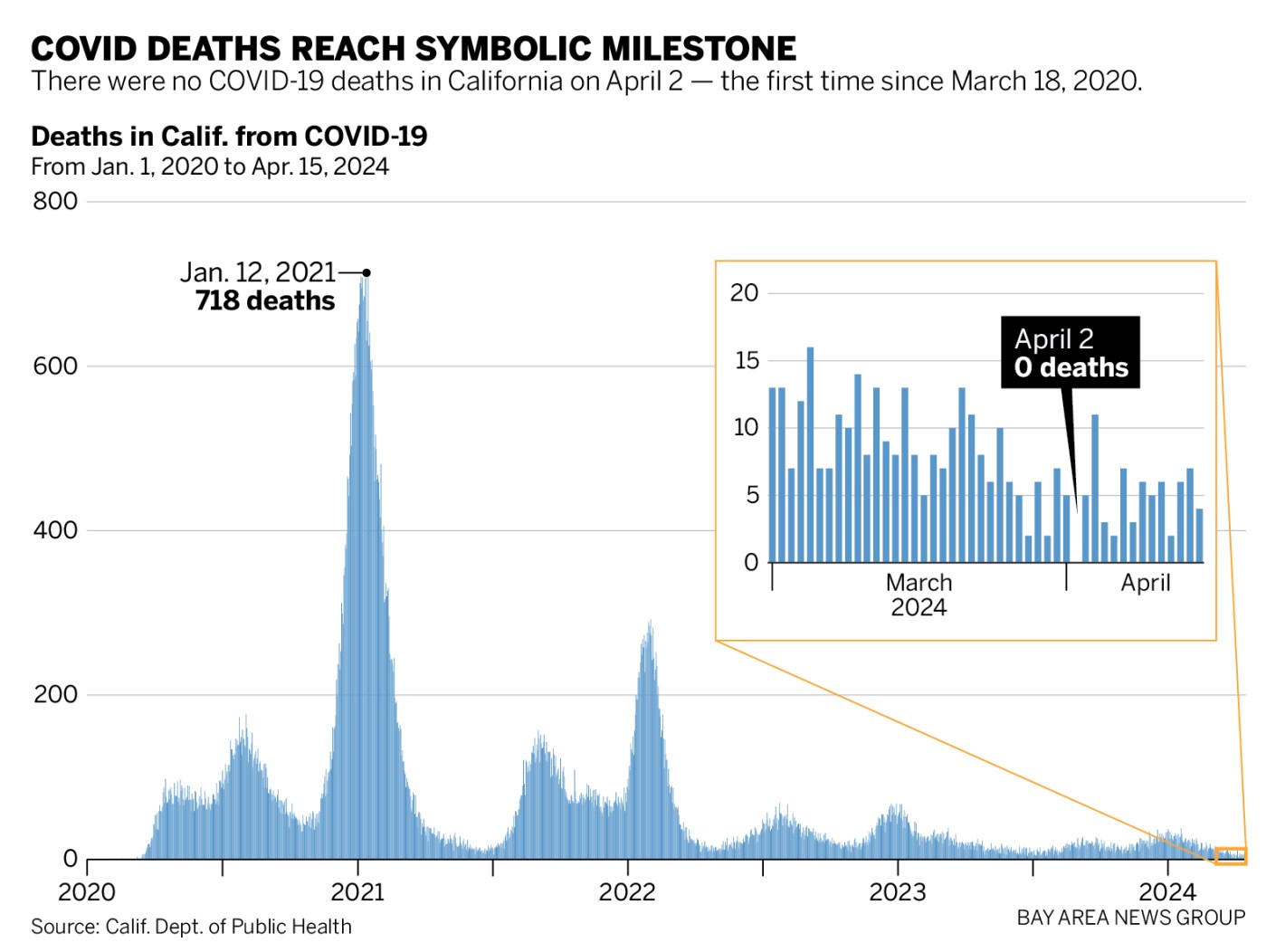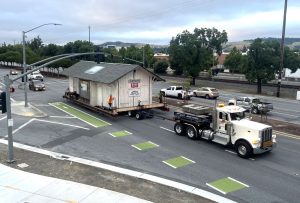It was a regular Tuesday in spring, sunny and warm, and a little foggy at the coast. But as April 2, 2024 came to a close, a silent victory emerged: the day had passed without a single Californian dying from COVID.
Over the next several weeks, as death certificates were filed and processed, it would become the first day without an official COVID death since March 18, 2020, the day before Governor Gavin Newsom announced a statewide stay-at-home order.
“That’s quite a notable day,” said Dr. Monica Gandhi, a UCSF infectious disease expert whose passion for working with HIV patients brought her to the Bay Area at the height of the AIDS epidemic.
It reminded her of another time, decades ago, when the Bay Area Reporter declared that there were “no obits,” to run for victims of HIV for the first time in 17 years. “It was just such a beautiful significant day for us in history.”
Like an obituary section with no HIV deaths, a day with no COVID deaths is merely a symbolic moment in a pandemic’s roller coaster timeline, statistically likely to happen once the average daily deaths drop low enough, but noteworthy nonetheless.
The deadly virus had already crept into the Golden State, when by late March 2020 it was responsible for deaths every single day. The highly contagious disease spread like wildfire through California’s most vulnerable populations — people who were immunocompromised, frail and elderly. Hospitals filled up. Schools and offices closed. Masks became a necessary fashion accessory.
For 1,476 days the virus’ death count ticked steadily upwards, sometimes by huge leaps in a single day. All tallied, the virus has killed over 107,000 Californians so far.
Now, four years in, the virus has become more manageable. The average number of daily COVID deaths in the state has dropped from a high of just over 30 in early January, during the winter surge, to around 14 at the beginning of March. By April, the average daily deaths dropped to four, the lowest since the virus first started spreading.
The change is dramatic. There were 718 COVID deaths reported on Jan. 12, 2021 — the deadliest day in California. That’s comparable to the average number of deaths from all causes in the state each day so far in 2024 — between 750 and 900.
The trajectory of the pandemic has brought the novel coronavirus closer to influenza in terms of its prevalence and deadliness, but it’s not there yet.
The deadliest day of this year’s flu season was Jan. 3, 2024, when 19 people around the state died, as reported on their death certificates. This winter, the deadliest day for COVID was Jan. 19, 2024, when 38 people died from the virus.
The seasonality of the flu means that during the off-season, like now, California often goes several days in a row without a single flu death. Many expect COVID to continue to be less deadly, though its year-round presence makes it a different threat than the flu, with its more distinct seasonal pattern.
As for the future? Expect more days with zero COVID deaths, but surges are also bound to come. A new family of sub-variants, called FLiRT, are causing some concern because recent vaccination rates are low and immunity is lagging.
“All the information we have now… is that there’s no difference in virulence,” said Dr. John Swartzberg, clinical professor emeritus of infectious diseases and vaccinology at UC Berkeley’s School of Public Health. He noted that although the severity has not changed, there does seem to be increased transmissibility with these new variants.
Schwartzberg said an updated vaccine is in the works. Luckily, he said, the worst is almost certainly behind us.
“I don’t think we’re going to see anything like we’ve just been seeing over the last four years,” Schwartzberg said.












